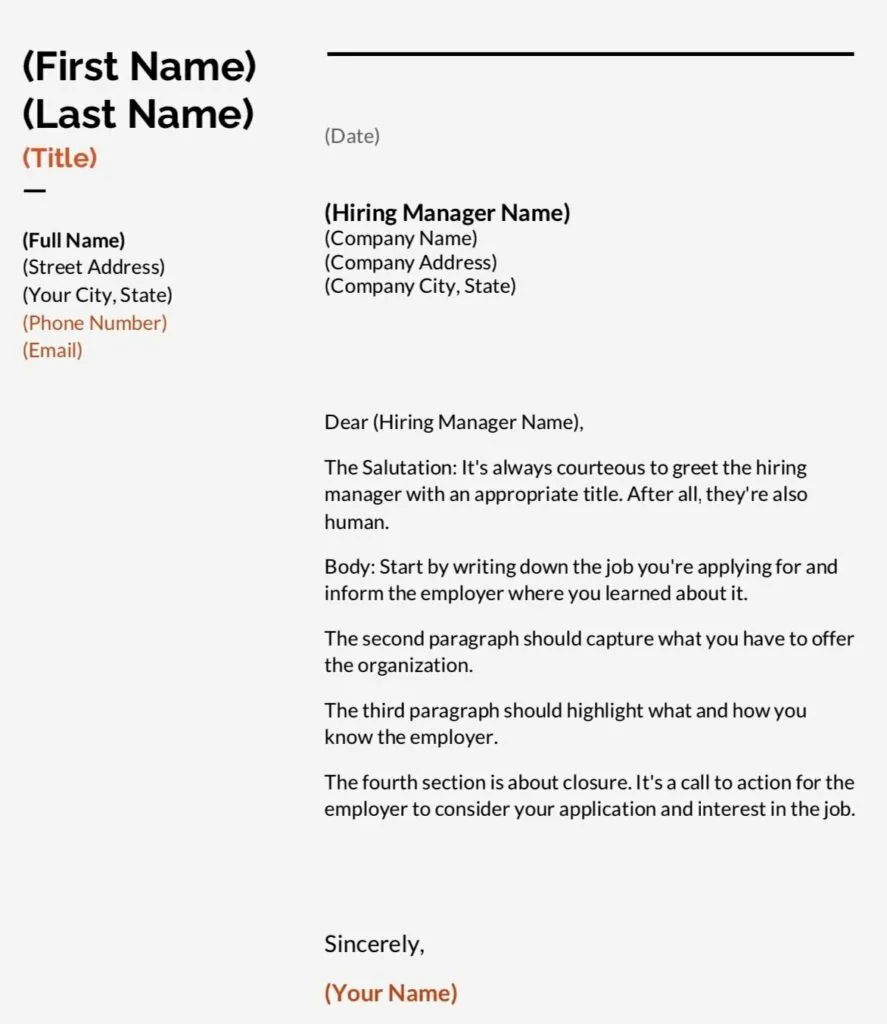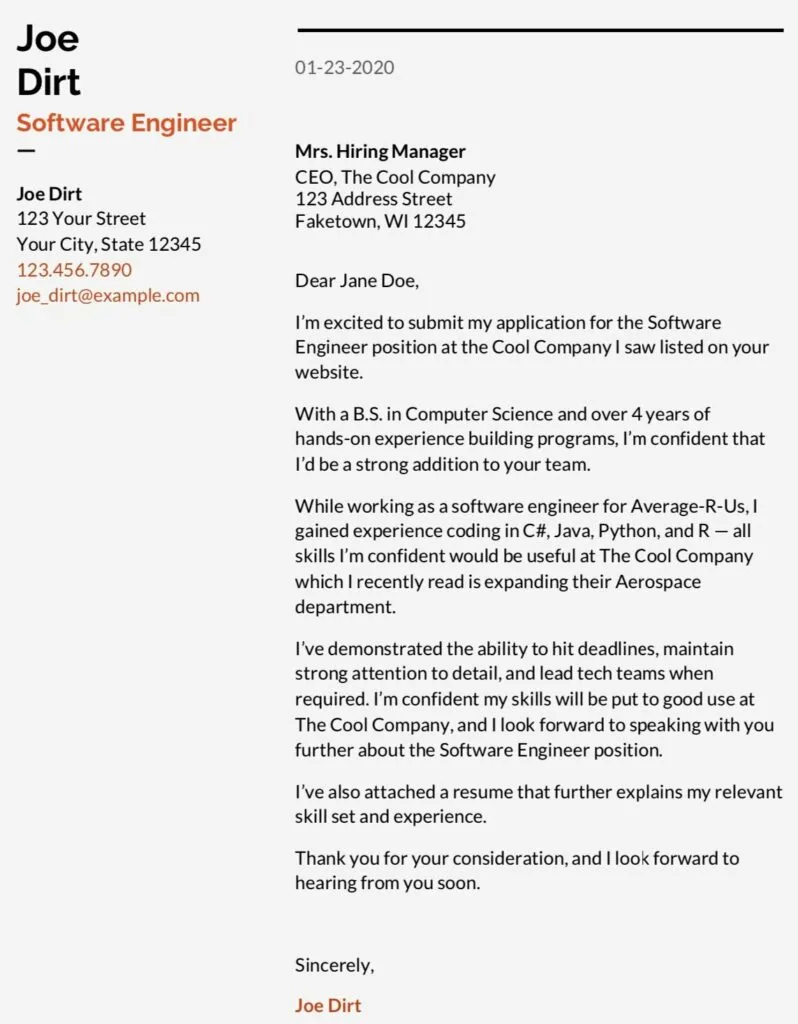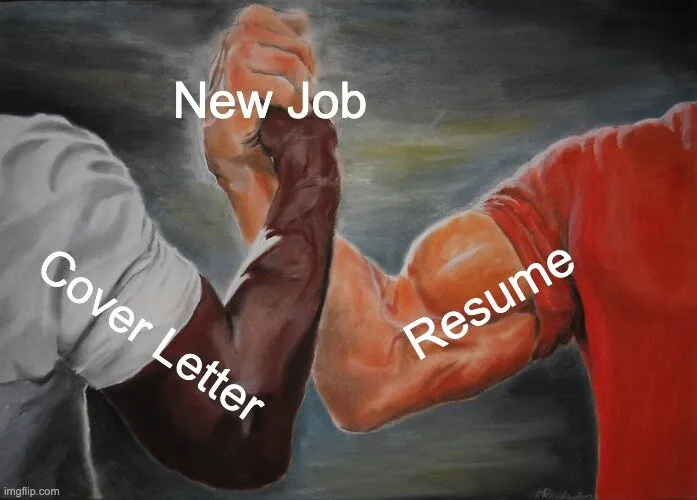Cover Letter Layout
The recent stiff competition for limited job opportunities has prevented many people from landing decent jobs. Although many applicants are qualified for a particular job, few realize that presenting the right documentation is the secret to staying ahead of the competition.
When writing a cover letter, the overall layout can make or break a potential interview request. If you style and design it in a way that catches the attention of your potential employer, you're ahead of the competition. Continue reading for tips and advice on how to write a winning cover letter properly.
What is the purpose of a cover letter?
The purpose of a cover letter is to introduce yourself and to explain why you are interested in and qualified for the job for which you are applying.
A cover letter should be included with your resume when you apply for a job. It should be tailored to the specific position for which you are applying and should highlight your skills, experiences, and accomplishments that are relevant to the role.
A compelling cover letter speaks to the hiring manager, telling them why you're the best candidate for a particular job. It describes how you are suited for the job and what you'll bring to the table when given the opportunity.
What to Include in a Cover Letter
Your cover letter can be divided into three sections: the introduction, an overview of your skills and expertise, and a conclusion.
Most employers often glance through a cover letter to get a taste of who you are, even before delving into a resume. Therefore, it's crucial to keep things organized and concise so they don't lose interest.
4 Steps on How to Write a cover letter for 2023
Writing a cover letter isn't easy, but you could face a lifetime of opportunities by writing a great one. People who know how to write a cover letter generally have a better chance of getting hired. Below are the four steps you should take to create a compelling cover letter:
1. Add Contact Information | Cover Letter Details
Your cover letter intro should include your name, official email, phone number, and perhaps LinkedIn profile.
Where applicable, include the hiring manager/organization's contact information, address, and number. Providing your contact information allows the employer to reach you when they find you fit for the job.
Note: Nowadays, recruiters are using LinkedIn to find potential employees for their organizations. Feel free to add your LinkedIn profile URL if you would like.
2. Create The Salutation | Cover Letter Introduction
It's always courteous to greet the hiring manager with an appropriate title. After all, they're also human. You can research a little about the employer and discover who they are. This way, the salutation won't be awkward, and there won’t be any mistakes. But if you can't find out much about them, don't worry.
Use "Dear Sir/Madam." This is the most appropriate salutation in case you have no clue who the recruiter or hiring manager is.
3. How to Start a Cover Letter | Cover Letter Body
This is where the bulk of your cover letter content will go.
Opening Paragraph
-
Start by writing down the job you're applying for and inform the employer where you learned about it.
-
Whether it's on the Internet or from a newspaper advert, mentioning where you learned about the job opportunity shows your application's seriousness.
2nd Paragraph
-
The second paragraph should capture what you have to offer the organization.
-
In this section, describe how you're equipped to handle the responsibilities of the advertised position.
-
Please write a concise summary of your skills, experience, and achievements, but don't overdo it. The resume will cover the skills section.
-
Use bullet points to break down the text to make it easy to read.
3rd paragraph
-
The third paragraph should highlight what and how you know the employer.
-
For example, an article posted on your favorite social media platform might have drawn your attention to the company. Or maybe it's been a lifelong dream to work with them.
-
Capturing this information shows the employer that you're interested in the organization's operations.
-
Don't make up stories or give false information, which could ruin your credibility. Provide accurate details you could remember even when invited for an interview.
Closing Paragraph
-
The fourth section is about closure. It's a call to action for the employer to consider your application and interest in the job.
-
Ask them to contact you and give feedback. It's also wise to leave final regard or a formal closure.
-
Words like "Yours Sincerely" and "Best Regards," are highly recommended because they offer a professional approach.
4. Proofreading | Cover Letter Review
A letter full of mistakes is a turn-off for most employers and will almost all but destroy your chances of an interview. It shows that the applicant didn't take enough time to read through it and might not be serious about the job.
Always read through the letter to correct mistakes and make the message as clear as your intentions. Ask family members and friends to run through it or use a grammar-checking website like Grammarly to correct any mistakes.
Cover Letter Layout
The layout of a cover letter is fairly straightforward, but we've provided an easy-to-follow infographic to help make it a bit more visual. While the header, body, and closing sections are crucial, you can also see how we implemented the contact information into the letter.

Cover Letter Template
This template can be helpful for people who are not sure how to structure their cover letter or what information to include. It can be used as a starting point when writing a cover letter, with the idea being that you would customize the template to fit your unique background and skills.

Cover Letter Example
If you are unsure of what a cover letter looks like, this sample can be used as a guide or template for creating your specific cover letter. This is designed to give you an idea of the structure and content of a successful cover letter.

ResumeGenius has a large number of cover letters to utilize. Check them out here
Related Articles:
Frequently Asked Questions (FAQ)
What Else Makes a Great cover letter?
Prior Research the Employer
-
Always research the hiring organization and the job being offered. A good cover letter shows that you understand what you're signing up for.
-
In most cases, the employer will prioritize applicants who demonstrate a good understanding of the organization's mission and the responsibilities they'll be allocated.
Optimize The Cover Letter With Related Keywords
-
This will increase your visibility to the employer. For example, if a job opening entails journalism, use terms related to journalism, such as editing and writing.
-
Many recruiters are busy and have limited time to read the entire cover letter. Most will only go through the first few lines (or use the “ctrl F” find function) to get a picture of who you are.
-
Make the introduction short, precise, and engaging to encourage the employer to read more about you.
Making it Relevant
-
Your cover letter should be relevant to the job you're applying for.
-
Some recruiters use an Applicant Tracking System (ATS), software designed to filter applications and present the best matches for a particular job. These systems are primarily used for resumes, but cover letters are filtered through.
-
Many applicants don't pass the ATS, especially if they didn't read through the job posting.
-
If you don't want to get filtered out by the ATS, ensure that the cover letter is relevant and rich with keywords related to the job.
-
Since it goes with the resume, the cover letter will have given more space to add those keywords and increase the chances of getting discovered.
How Long Should a Cover Letter Be?
Cover letters should be half a page to a full page long (nothing beyond that). Look to limit your cover letter to around 3 to 6 paragraphs, and try not to go beyond 500 words. The recruiter or hiring manager should be able to quickly glance through the content (15 seconds or less).
-
Page Length: Should be 1/2 - 1 page long
-
Paragraph Count: Stick to 3 to 6 paragraphs long
-
Word Count: Have no more than 500 words
Are Cover Letters Still Relevant in 2023?
Yes, cover letters are still relevant and can be an important part of the job application process 2023. While many companies don't require a cover letter, and others may only give it cursory consideration, a well-written cover letter can still be a valuable tool for introducing yourself to an employer and explaining why you are a good fit for the job.
Cover Letter Meme
Wrapping Up | What Should a Cover Letter Include
Your cover letter is an introduction that you can't miss on. Understanding how to write one specifically for the targeted employer properly will leave an amazing first impression!
Remember, the main purpose is to capture the hiring manager's attention. You want to convince them that you're the person they've been looking for. To recap our key takeaways, we ran through the following**:**
-
What to include in a cover letter, such as the introduction, main content, and closing
-
The cover letter template to help make your own
-
The cover letter examples to reference when writing your own
-
The suggested length of a cover letter
We hope this helps, and good luck out there!
Your cover letter is only as good as the content of your resume. Here are some resources to help write your own resume or resume writing services to pass off the task to a professional.
Title: Cover Letter Layout 2023
Category: theDocuments
Tags: how to write a cover letter in 2023, how long should a cover letter be, writing cover letter, what is included in a cover letter, how do I write a cover letter for a job, cover letter template, cover letter sample
Author: Reid is a contributor to theJub. He's an employment and marketing enthusiast who studied business before taking on various recruiting, management, and marketing roles. More from the author. | Author Profile






